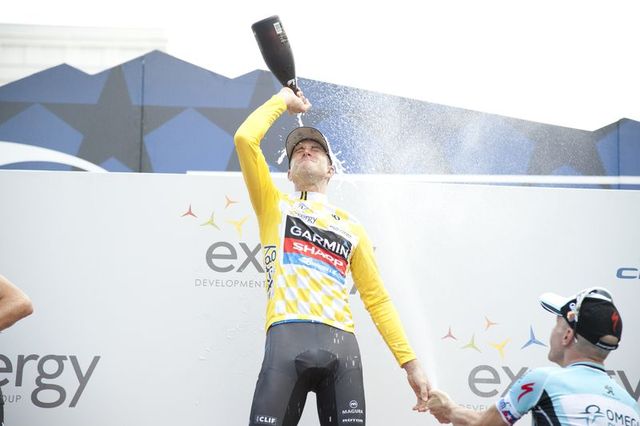
In a recent press conference at Aspen's Little Nell Hotel, organizers of the announced the host cities and overall race course for the 2013 edition of the tour of Colorado. And though routing specifics are still forthcoming, with a few notable exceptions the third edition of the race looks like a step or two backward from this year's parcours.
Beginning in Aspen on August 19, the race will take in a compact and mostly familiar route through the state. Loveland and Fort Collins are the only two new cities to feature in the third annual event (Stage 6), while Durango, Telluride, Crested Butte, Colorado Springs, Golden, and Boulder have all been nixed. The full route for 2013 USAPC is as follows:
Stage 1: Aspen/Snowmass Circuit (8/19)
Stage 2: Aspen/Snowmass to Breckenridge (8/20)
Stage 3: Breckenridge to Steamboat Springs (8/21)
Stage 4: Steamboat Springs to Beaver Creek (8/22)
Stage 5: Individual Time Trial, Vail (8/23)
Stage 6: Loveland to Fort Collins (8/24)
Stage 7: Denver Circuit (8/25)
One strong suit of this year's route is that it should maximize racer-spectator interaction, with a couple of circuits, where crowds get more than just a fleeting glimpse of the action, and several stages beginning exactly where they ended so that fans can easily view the race twice. “The feedback that we've gotten from the athletes and the fans is they like to see the athletes multiple times,” race CEO Shawn Hunter said at Wednesday's event. “It's exciting when fans get to see the peloton come through five or six times.” In particular, the return of the criterium finish in downtown Denver is a smart move because the speed and energy should galvanize what's certain to be big crowds.
I'm also glad to see the return of the Vail time trial. Though details haven't yet been announced, the route is almost certain to mimic the 2011 ITT through the village and partway up Vail Pass, a thrilling and historic course that was used in both the Coors Classic and Red Zinger Classic. This time trial proved decisive in the premier USAPC, when Levi Leipheimer secured the overall race by besting Christian Vande Velde by less than a second.
One lesson the organizers don't seem to have learned, however, is the need to complement an exciting time trial with equally decisive stages. Remember that in 2011 the three days following the Vail ITT were so nondescript that they were like a procession to Leipheimer's inevitable win. Sure, there are only two stages following Vail in 2013, but unless organizers come up with some very inventive routing, the GC may be locked up and those final stages largely ceremonial.
That gets at the biggest failing with this year's course: Like 2011, it lacks mountaintop finishes where racers can really open up gaps. There are uphill finishes like the one at Beaver Creek, but these are short, punchy affairs compared with the 2012 Stage 6 finale on Flagstaff Mountain in Boulder. That finish had some logistical issues for fans, but there's no doubt that it provided the single most exciting day of racing in USAPC history and kept the race up in the air until the final TT. Boulder didn't apply to the race for 2013, reportedly because they lost money on last year's stage, but I'm surprised that the USAPC didn't seek out some other mountaintop finishes (Pikes Peak? Mt. Evans?) to fill the gap.
Last year, a solid course was made extra exciting by some very motivated teams, especially Garmin, which essentially tried to blow every single stage apart with extremely aggressive race tactics. In 2013, the lackluster course makes the USAPC even more dependent on forceful and dynamic race tactics. That could still happen, and I hope it does, though the terrain is working against the teams, not for them.
Colorado Governor John Hickenlooper unwittingly summed up the race's dilemma when he said, “Not only is [the USA Pro Challenge] the best American competition, it’s essentially a week-long advertisement for our state with 128 of the best cyclists in the world acting as tour guides.” Problem is, most cycling fans want to watch a bike race, not a state tourism advertisement.
—Aaron Gulley